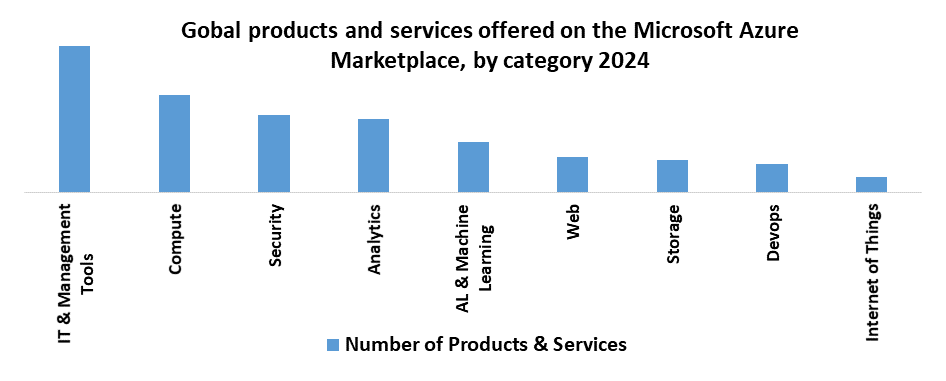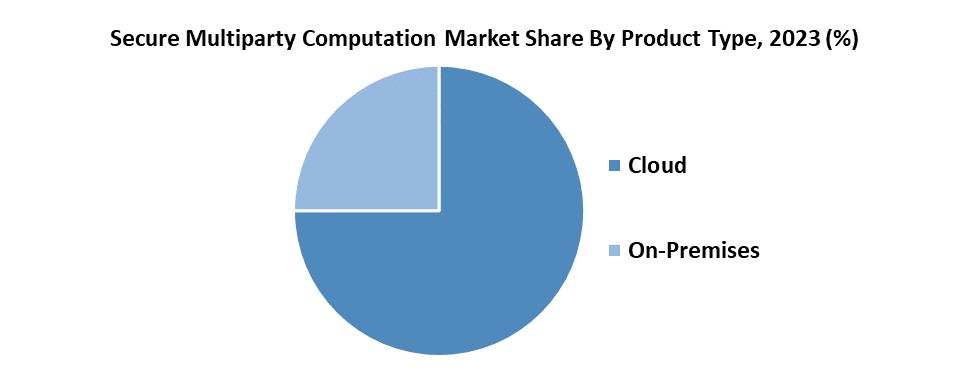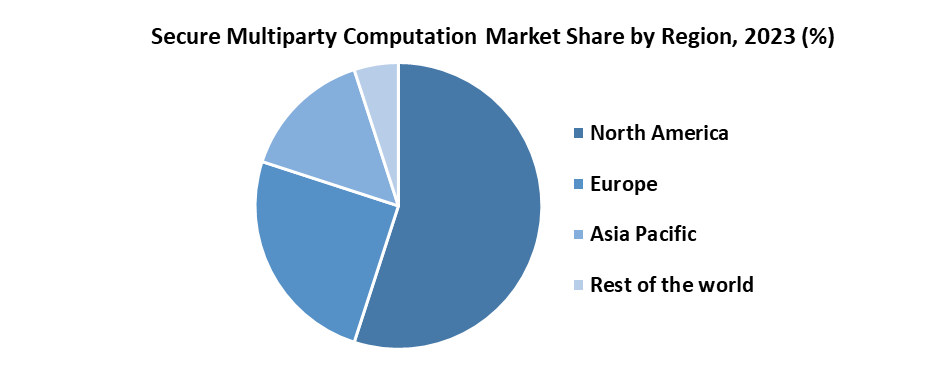Secure Multiparty Computation Market: Global Industry Analysis and Forecast (2024-2030)
The Secure Multiparty Computation Market size was valued at USD 754.09 Mn. in 2023 and the total Global Secure Multiparty Computation revenue is expected to grow at a CAGR of 11.55% from 2024 to 2030, reaching nearly USD 1565.34 Mn. by 2030.
Format : PDF | Report ID : SMR_2167
Secure Multiparty Computation Market Overview
Secure multiparty computation (MPC / SMPC) is a cryptographic protocol that distributes computation across multiple parties where no individual party can see the other parties’ data. These protocols enable data scientists and analysts to compliantly, securely, and privately compute on distributed data without ever exposing or moving it.
- According to SMR analysis, about 64% of businesses has utilized AI for security capabilities and 29% are considering it.
The report provides an analysis of the Secure Multiparty Computation market, both in the past and present, and future estimates. The primary research objective of the Secure Multiparty Computation Market is to analyze and evaluate the growth potential, challenges, and adoption trends of SMPC technologies across various industries. This includes assessing the market drivers such as increasing data privacy concerns, regulatory compliance requirements, and the need for secure collaborative computations in AI and ML applications. Additionally, the study aims to identify opportunities for growth in the market.
The report is divided into various segments to provide a detailed analysis of the market from every possible aspect. The market report lists the major players involved in the Secure Multiparty Computation Market under the competitive landscape and company profile chapters. The major players in the market are evaluated based on service offerings, financial statements, key developments, strategic approach to the market, position in the market, geographical penetration, and other key features.
The report also includes an analysis of both quantitative and qualitative data, with a forecast period extending from 2024 to 2030. The market estimates are based on a comprehensive research methodology that includes primary research, secondary research, and expert advice. The report takes into account current market dynamics, economic, social, and political factors, as well as regulations, government spending, and research and development growth. Positive and negative changes to the market are also considered.
To get more Insights: Request Free Sample Report
Secure Multiparty Computation Market Dynamics
Rise of Secure Multiparty Computation Bridging AI Innovation and Data Privacy
The integration of Artificial Intelligence (AI) and Machine Learning (ML) technologies is revolutionizing industries on a global scale, leading to an increased need for solutions that protect privacy driving the demand for the Secure Multiparty Computation Market. The effective operation of AI and ML algorithms relies on widespread data to produce accurate forecasts, giving rise to concerns about the security and confidentiality of data. As a vital solution, Secure Multiparty Computation allows multiple parties to perform collaborative computations on their respective inputs while keeping these inputs confidential.
- According to SMR analysis, 40% of major enterprises planned to implement SMPC by 2025 to strengthen their data security frameworks.
In the finance industry, where privacy is of utmost importance, SMPC facilitates secure collaborative analysis of transaction data to identify fraudulent activities and money laundering without compromising individual privacy. Companies like JP Morgan and Visa have made investments in SMPC technologies to enhance their AI-driven fraud detection systems further driving the Secure Multiparty Computation Market. The SMR research highlights the financial need for strong privacy-preserving solutions, with an average cost of $4.45 million per event for data breaches in 2023. The increasing prominence of joined learning using decentralized data sources heavily relies on SMPC. Google's implementation of merged learning to enhance Android's predictive text function without accessing user data directly serves as a clear example.
Additionally, legislation such as the California Consumer Privacy Act (CCPA) and the European Union's ePrivacy Regulation mandates more stringent data handling protocols. Companies that adopt SMPC ensure compliance while leveraging AI and ML technologies to gain a competitive edge further increasing the demand for the Secure Multiparty Computation Market. The combination of advancements in AI and ML with the need for strict data privacy solutions drives growth in the Secure Multiparty Computation market. By enabling secure data collaboration and adherence to international privacy regulations, SMPC supports the increasing demand for privacy-preserving AI applications across various industries.
- According to SMR analysis, 88% of AI is expected to be essential for performing security tasks more efficiently.

Computational Burden of SMPC as a Barrier to Widespread Adoption
SMPC protocols are designed to ensure privacy and security by spreading computations across multiple parties without revealing individual data. This very secure method requires a lot of resources. For example, the garbled circuit’s protocol, a common SMPC technique, involves multiple rounds of communication between parties and extensive cryptographic operations. As a result, these protocols often create significant computational overheads that can be up to 1000 times higher than standard computation methods. Even simple operations like addition and multiplication take much longer in practical applications.
According to SMR, a secure two-party computation of a simple AES encryption takes 7.2 seconds, while the non-secure equivalent operation is completed in less than a millisecond. In industries like finance and healthcare, where large volumes of sensitive data are handled, implementing SMPC at scale can lead to considerable latency issues. For instance, secure computations in financial risk analysis can increase processing times from minutes to hours, affecting the responsiveness and efficiency of services. The increased latency not only impacts real-time processing capabilities but also raises operational costs, as more computational resources are needed to achieve the desired level of security.
This substantial increase in computational requirements acts as a barrier to widespread adoption, especially for businesses that heavily rely on real-time data processing. Therefore, while SMPC provides unparalleled security advantages, its impact on computational time remains a critical barrier that challenges its integration into mainstream applications and hinders secure multiparty computation market growth.
Secure Multiparty Computation Market Segment Analysis
By Deployment Mode, the cloud segment held the largest market share in the global Secure Multiparty Computation market in 2023. The cloud sector utilizes the capacity to supply computing power and storage as needed, which is crucial for managing the intricate calculations involved in SMPC. The use of cloud-based SMPC has experienced significant expansion, with around 65% of businesses favoring cloud solutions for their SMPC requirements. This preference is owing to the seamless integration of cloud services with existing IT infrastructures, reducing the necessity for substantial capital investment in on-premises hardware marking the dominance of the segment in the secure multiparty computation market.
Along with cost savings, cloud platforms provide improved security features such as advanced encryption standards and multi-factor authentication, which are vital for upholding data privacy and integrity in SMPC processes. For instance, Microsoft Azure and Amazon Web Services (AWS) have integrated robust security measures that comply with regulatory standards like GDPR and CCPA, ensuring adherence and safeguarding sensitive information.
The flexibility of cloud-based SMPC also enables real-time collaboration and data sharing among geographically dispersed teams. This is especially advantageous for sectors such as finance and healthcare, where secure and efficient data processing is of utmost importance. The cloud segment's ability to furnish scalable, secure, and cost-effective solutions positions it as a dominant force in the SMPC market. With ongoing advancements in cloud technology and increased awareness of data privacy, the adoption of cloud-based SMPC solutions is projected to gain momentum, further solidifying its leading position in the secure multiparty computation market.

Secure Multiparty Computation Market Regional Analysis
North America held the dominant position in the global Secure Multiparty Computation market in 2023. Advanced technological infrastructure, substantial investment in research and development, a robust regulatory framework, and a thriving cybersecurity ecosystem are the factors influencing the secure multiparty computation market. The United States, in particular, leads in technological innovation, with significant contributions from top universities and research institutions. For instance, universities such as MIT and Stanford are at the forefront of cryptographic research, fostering advancements in SMPC techniques. The region benefits from substantial investment by both the public and private sectors.
The regulatory environment in the region supports the growth of the SMPC market by enforcing stringent data protection laws. The General Data Protection Regulation influences many U.S. companies to adopt advanced cryptographic methods to ensure compliance with international standards. Additionally, the U.S. has introduced laws such as the California Consumer Privacy Act (CCPA), which mandates rigorous data protection measures, thereby driving demand for a secure multiparty computation market. The cybersecurity ecosystem in the region is further bolstered by a high concentration of cybersecurity firms, venture capital funding, and start-up incubators.
For example, Silicon Valley alone hosts numerous cybersecurity start-ups focusing on advanced cryptographic solutions, contributing to the rapid development and commercialization of SMPC technologies. The region’s emphasis on collaborative efforts between academia, industry, and government agencies facilitates innovation and practical application of SMPC. Initiatives like the National Cybersecurity Center of Excellence (NCCoE) exemplify this collaboration by working on projects that integrate SMPC into real-world scenarios, thereby enhancing the secure multiparty computation market's growth prospects.

Secure Multiparty Computation Market Competitive Landscape
The competitive landscape of the secure multiparty computation market provides insights into each competitor's profile, including company overview, financials, global presence, production sites, product offerings, and more. This helps stakeholders evaluate the competitive dynamics and make informed decisions. The major key players include Microsoft, IBM, Google, Fireblocks, Blockdaemon, Qredo, and Penta Security among others. These companies are pushing boundaries and undertaking strategic activities including contractual agreements, mergers and acquisitions, and collaborations with other organizations.
- In 2023, IBM partnered with European bank Intesa Sanpaolo to deliver secure digital transactions using fully homomorphic encryption (FHE) technology. FHE allows computations to be performed on encrypted data without decryption, enhancing privacy and security.
- In 2023, DuoKey announced a partnership with the University of Applied Sciences and Arts Western Switzerland (HES-SO Valais-Wallis) and Partisia Blockchain to develop a decentralized electronic identity (e-ID) system for Switzerland. This collaboration leverages DuoKey's expertise in privacy-preserving solutions and security, aiming to create an e-ID system that prioritizes privacy, efficiency, and scalability while complying with the new e-ID Act of the Swiss Federal Council.
|
Secure Multiparty Computation Market Scope |
|
|
Market Size in 2023 |
USD 754.09Mn. |
|
Market Size in 2030 |
USD 1565.34Mn. |
|
CAGR (2024-2030) |
11.55% |
|
Historic Data |
2018-2022 |
|
Base Year |
2023 |
|
Forecast Period |
2024-2030 |
Segments |
By OfferingServiceSolutions |
|
By Deployment Mode Cloud On-Premises |
|
|
By Application BSFI IT & Services Government Healthcare Retail Others |
|
|
Regional Scope |
North America- United States, Canada, and Mexico Europe – UK, France, Germany, Italy, Spain, Sweden, Austria, and Rest of Europe Asia Pacific – China, India, Japan, South Korea, Australia, ASEAN, Rest of APAC Middle East and Africa - South Africa, GCC, Egypt, Nigeria, Rest of the Middle East and Africa South America – Brazil, Argentina, Rest of South America |
Key Player in the Secure Multiparty Computation Market
- Microsoft (US)
- IBM (US)
- Google (US)
- Fireblocks (US)
- Blockdaemon (US)
- Qredo (British Virgin Islands)
- Penta Security (South Korea)
- Zengo (Israel)
- Inpher (US)
- CYBAVO (Singapore)
- Liminal Custody (Singapore)
- Silence Laboratories (Singapore)
- Sharemind (Estonia)
- Atato (Singapore)
- Web3Auth (Singapore)
- Partisia Blockchain (Switzerland)
- Orochi Network (Singapore)
- Binance Holdings Ltd (Malta)
- Pyte (US)
- Roseman Labs (Netherlands)
- MPCVault (US)
- DuoKey (Switzerland)
- Linksight (Netherlands)
Frequently Asked Questions
Demand for private key security and data privacy regulations compliance are the drivers of the Secure Multiparty Computation market.
Asia Pacific is the fastest growing region in the global Secure Multiparty Computation market during the forecast period.
The Market size was valued at USD 754.09 Million in 2023 and the total Market revenue is expected to grow at a CAGR of 11.55% from 2024 to 2030, reaching nearly USD 1565.34 Million.
The segments covered in the market report are offerings, deployment modes, applications, and regions.
1. Secure Multiparty Computation Market: Research Methodology
2. Secure Multiparty Computation Market: Executive Summary
3. Secure Multiparty Computation Market: Competitive Landscape
4. Potential Areas for Investment
4.1. Stellar Competition Matrix
4.2. Competitive Landscape
4.3. Key Players Benchmarking
4.4. Market Structure
4.4.1. Market Leaders
4.4.2. Market Followers
4.4.3. Emerging Players
4.5. Consolidation of the Market
5. Secure Multiparty Computation Market: Dynamics
5.1. Market Trends
5.2. Market Drivers
5.3. Market Restraints
5.4. Market Opportunities
5.5. Market Challenges
5.6. PORTER’s Five Forces Analysis
5.7. PESTLE Analysis
5.8. Technology Roadmap
5.9. Strategies for New Entrants to Penetrate the Market
5.10. Regulatory Landscape by Region
5.10.1. North America
5.10.2. Europe
5.10.3. Asia Pacific
5.10.4. Middle East and Africa
5.10.5. South America
6. Secure Multiparty Computation Market Size and Forecast by Segments (by Value USD Million)
6.1. Secure Multiparty Computation Market Size and Forecast, by Offerings (2023-2030)
6.1.1. Service
6.1.2. Solutions
6.2. Secure Multiparty Computation Market Size and Forecast, by Deployment Type (2023-2030)
6.2.1. Cloud
6.2.2. On-Premises
6.3. Secure Multiparty Computation Market Size and Forecast, by Application (2023-2030)
6.3.1. BSFI
6.3.2. IT & Services
6.3.3. Government
6.3.4. Healthcare
6.3.5. Retail
6.3.6. Others
6.4. Secure Multiparty Computation Market Size and Forecast, by Region (2023-2030)
6.4.1. North America
6.4.2. Europe
6.4.3. Asia Pacific
6.4.4. Middle East and Africa
6.4.5. South America
7. North America Secure Multiparty Computation Market Size and Forecast (by Value USD Million)
7.1. North America Secure Multiparty Computation Market Size and Forecast, by Offerings (2023-2030)
7.1.1. Service
7.1.2. Solutions
7.2. North America Secure Multiparty Computation Market Size and Forecast, by Deployment Type (2023-2030)
7.2.1. Cloud
7.2.2. On-Premises
7.3. North America Secure Multiparty Computation Market Size and Forecast, by Application (2023-2030)
7.3.1. BSFI
7.3.2. IT & Services
7.3.3. Government
7.3.4. Healthcare
7.3.5. Retail
7.3.6. Others
7.4. North America Secure Multiparty Computation Market Size and Forecast, by Country (2023-2030)
7.4.1. United States
7.4.2. Canada
7.4.3. Mexico
8. Europe Secure Multiparty Computation Market Size and Forecast (by Value USD Million)
8.1. Europe Secure Multiparty Computation Market Size and Forecast, by Offerings (2023-2030)
8.1.1. Service
8.1.2. Solutions
8.2. Europe Secure Multiparty Computation Market Size and Forecast, by Deployment Type (2023-2030)
8.2.1. Cloud
8.2.2. On-Premises
8.3. Europe Secure Multiparty Computation Market Size and Forecast, by Application (2023-2030)
8.3.1. BSFI
8.3.2. IT & Services
8.3.3. Government
8.3.4. Healthcare
8.3.5. Retail
8.3.6. Others
8.4. Europe Secure Multiparty Computation Market Size and Forecast, by Country (2023-2030)
8.4.1. UK
8.4.2. France
8.4.3. Germany
8.4.4. Italy
8.4.5. Spain
8.4.6. Sweden
8.4.7. Austria
8.4.8. Rest of Europe
9. Asia Pacific Secure Multiparty Computation Market Size and Forecast (by Value USD Million)
9.1. Asia Pacific Secure Multiparty Computation Market Size and Forecast, by Offerings (2023-2030)
9.1.1. Service
9.1.2. Solutions
9.2. Asia Pacific Secure Multiparty Computation Market Size and Forecast, by Deployment Type (2023-2030)
9.2.1. Cloud
9.2.2. On-Premises
9.3. Asia Pacific Secure Multiparty Computation Market Size and Forecast, by Application (2023-2030)
9.3.1. BSFI
9.3.2. IT & Services
9.3.3. Government
9.3.4. Healthcare
9.3.5. Retail
9.3.6. Others
9.4. Asia Pacific Secure Multiparty Computation Market Size and Forecast, by Country (2023-2030)
9.4.1. China
9.4.2. S Korea
9.4.3. Japan
9.4.4. India
9.4.5. Australia
9.4.6. Indonesia
9.4.7. Malaysia
9.4.8. Vietnam
9.4.9. Taiwan
9.4.10. Bangladesh
9.4.11. Pakistan
9.4.12. Rest of Asia Pacific
10. Middle East and Africa Secure Multiparty Computation Market Size and Forecast (by Value USD Million)
10.1. Middle East and Africa Secure Multiparty Computation Market Size and Forecast, by Offerings (2023-2030)
10.1.1. Service
10.1.2. Solutions
10.2. Middle East and Africa Secure Multiparty Computation Market Size and Forecast, by Deployment Type (2023-2030)
10.2.1. Cloud
10.2.2. On-Premises
10.3. Middle East and Africa Secure Multiparty Computation Market Size and Forecast, by Application (2023-2030)
10.3.1. BSFI
10.3.2. IT & Services
10.3.3. Government
10.3.4. Healthcare
10.3.5. Retail
10.3.6. Others
10.4. Middle East and Africa Electric Vehicle Traction Motor Market Size and Forecast, by Country (2023-2030)
10.4.1. South Africa
10.4.2. GCC
10.4.3. Egypt
10.4.4. Nigeria
10.4.5. Rest of ME&A
11. South America Secure Multiparty Computation Market Size and Forecast (by Value USD Million )
11.1. South America Secure Multiparty Computation Market Size and Forecast, by Offerings (2023-2030)
11.1.1. Service
11.1.2. Solutions
11.2. South America Secure Multiparty Computation Market Size and Forecast, by Deployment Type (2023-2030)
11.2.1. Cloud
11.2.2. On-Premises
11.3. South America Secure Multiparty Computation Market Size and Forecast, by Application (2023-2030)
11.3.1. BSFI
11.3.2. IT & Services
11.3.3. Government
11.3.4. Healthcare
11.3.5. Retail
11.3.6. Others
11.4. South America Secure Multiparty Computation Market Size and Forecast, by Country (2023-2030)
11.4.1. Brazil
11.4.2. Argentina
11.4.3. Rest of South America
12. Company Profile: Key players
12.1. Microsoft
12.1.1. Company Overview
12.1.2. Financial Overview
12.1.3. Business Portfolio
12.1.4. SWOT Analysis
12.1.5. Business Strategy
12.1.6. Recent Developments
12.2. IBM
12.3. Google
12.4. Fireblocks
12.5. Blockdaemon
12.6. Qredo
12.7. Penta Security
12.8. Zengo
12.9. Inpher
12.10. CYBAVO
12.11. Liminal Custody
12.12. Silence Laboratories
12.13. Sharemind
12.14. Atato
12.15. Web3Auth
12.16. Partisia Blockchain
12.17. Orochi Network
12.18. Binance
12.19. Pyte
12.20. Roseman Labs
12.21. MPCVault
12.22. DuoKey
12.23. Linksight
13. Key Findings
14. Analyst Recommendations
















